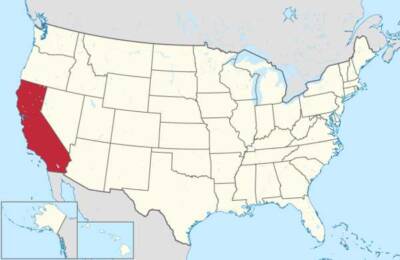Talk of secession in America is still alive and well.
Although the 1860s and the American Civil War are more than 150 years in the rearview mirror, talk of secession in America has not completely disappeared. Recently, Rep. Marjorie Taylor Greene (R, GA) espoused a “national divorce,” whereby American citizens moving from blue states to red states would have their citizenship — and their voting franchise — held in abeyance for a period of five years. Secession traces a colorful history throughout the ages, both in America and world-wide.

Secession has been a global phenomenon since the beginning of recorded history. One of the most famous secessions was the purposeful detachment of the American colonies from the British Empire, an effort that began in 1775 and lasted for 8 years. Numerous other examples of successful and unsuccessful secession exist, including the escape of Tunesia from French sovereignty and the excision of Panama from Columbia, a move that precipitated the creation of the Panama Canal more than 100 years ago.
When Bangladesh broke away from Pakistan in 1971, the mother nation responded with widespread genocide and mass rape, doing little to convince the breakaway nation to return to the fold. More recently, in 1991, 14 political entities escaped the clutches of the former Soviet Union, when that country ceased to exist. Control of those nations has been contentious ever since.
California, the largest American state in population and economic prosperity, has pondered separation from the other states as a matter of self-interest. Red states are in large measure supported by tax revenue from blue California. According to political observers, Democrats have “depended upon California for having a chance at winning presidential elections” since the 1990s. Should California quit the union, they say, the tenor of American politics would almost certainly drift more conservative. California by itself has the 5th largest economy in the world, larger than the U.K., at nearly 3 trillion dollars per annum.
Another secessionist movement of long standing is the effort by Michigan’s Upper Peninsula (U.P.) to separate from the rest of the state, the so-called State of Superior. This controversy has raged since 1897 but became exacerbated in 1957 with the completion of a bridge that connects the northern populace with the residents of the U.P. (known colloquially as “Yoopers”); they are also known as “Trolls,” or the “creatures which live below the bridge.”
Dipping below the Mason-Dixon line, the so-called Republic of Florida (ROF) hopes to establish a formidable white nationalist ethno-state and, to that end, has founded a militia. Established in 2014, it has followers in Tallahassee and South Florida. ROF is a notoriously anti-Semitic organization.
Jordan Jereb, titular head of the ROF, initially said that the accused and later confessed shooter at Marjory Stoneman Douglas High School in Parkland, Florida—Nikolas Cruz—was a member of the ROF. 19 people lost their lives at Parkland. Jereb subsequently recanted, saying he was only “making a joke.” Offers for Jereb to take his comedy show on the road were not forthcoming, including a foiled prospective invitation from the Friars’ Club. Jereb dismissed the Friars Club: “Too many Jews anyway,” he remarked tersely.
According to our sources, Florida governor and Trump rival for the Republican nomination for the presidency, Ron Desantis, refused to distance his campaign from the ROF, saying that “each member has a vote, like anyone else.”
Others secessionist movements, so far falling under the national radar, are the union of the states of Oregon and Washington, following their exit from the United States. The resultant entity, “Washegon,” would approximately double the size and population of the individual states and would have a capital, known as Saleattle, located at the midpoint between Salem and Seattle. Their anticipated state fruit would be a hybrid cherry/apple, tentatively known as the Cheraple.
A remote configuration would transpire by the joining of the non-contiguous states of Texas and Florida, a conjectural political entity christened by pundits as a God-Forsaken Social Disaster,” or Godsod” for short. Speculatively, Godsod would cater to the +70 set and legislate to ban all abortions, women’s healthcare, books, and transsexuals. When questioned about the role of the LGBTQ community in Godsod, Florida’s Ron Desantis, who has come out in favor of the union, cautioned observers not to jump to conclusions. “There is a place for everyone in Godsod,” said Desantis. noting that “there are thirty-one zoos in Florida alone and 15 in its sister state of Texas. We’re high-minded in the south,” he said, remarking that with the large number of operational animal parks, “no freak will go without the attention that he or she–or it–so sorely needs.”
The design of a state flag for the proposed two-state nation presents an interesting conundrum: while Texas Governor Gregg Abbott has said he is broad-minded and open to a number of different patterns, Florida Chief Executive Ron Desantis was adamant: “The flag,” he stated plainly, “must in some fashion feature a dead mouse, dressed in drag.”
- Trump Rails Against Canada’s Greed, Duplicity - June 30, 2025
- Trump University Establishes MFA Program in Creative Lying - June 27, 2025
- ‘War President’ Trump: U.S. ‘Cleaned Iran’s Clock’ with ‘Big, Beautiful Bombs’ - June 23, 2025

